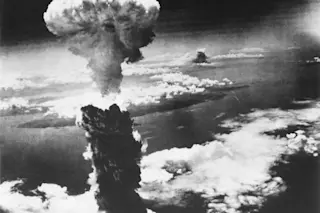If you look at the Google trends analysis for the term “nuclear war” over the past 30 days, it’s pretty hard to miss: On Feb. 24th, when Russia launched its invasion of Ukraine, the search term’s popularity soared. Just a few days later, it surged again, when President Vladimir Putin placed Russian nuclear forces on high alert — the first time its government had done so since 1991. And on March 4th, there was another spike, right after Russian forces captured a Ukrainian nuclear power plant in Zaporizhzhia.
Alex Wellerstein, a science historian at the Stevens Institute of Technology in New Jersey, is familiar with such signs of concern about nuclear war. In addition to his work studying the history of nuclear weapons, Wellerstein is also the creator of NUKEMAP, a website that allows users to model how much destruction different types of nuclear bombs might wreak if dropped on ...















